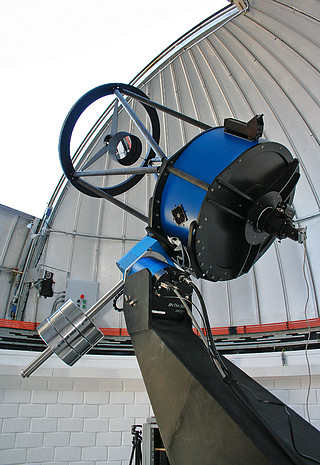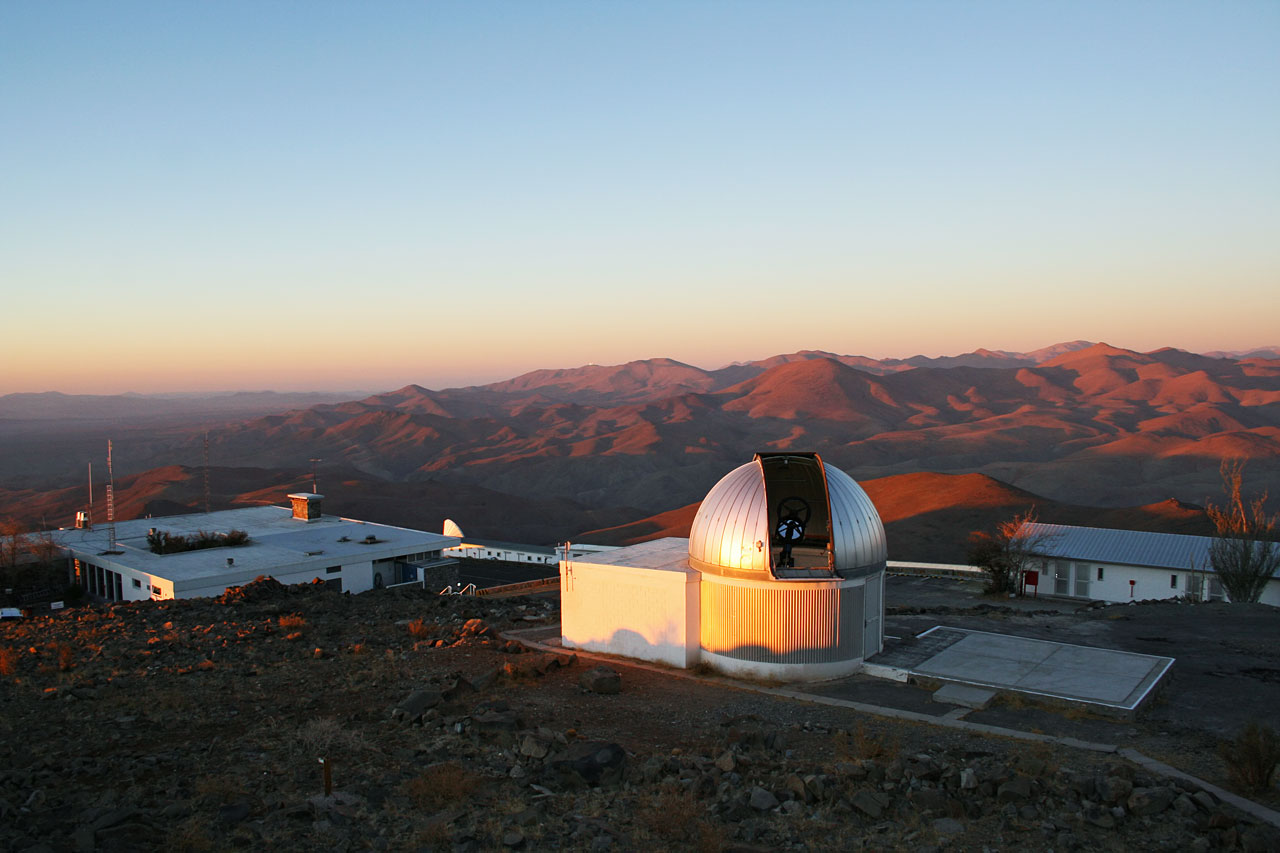TRAnsiting Planets and PlanetesImals Small Telescope–South

TRAPPIST–South (TRAnsiting Planets and PlanetesImals Small Telescope–South) is a 60 cm telescope at La Silla devoted to the study of planetary systems and it follows two approaches: the detection and characterisation of exoplanets around other stars and the study of comets orbiting around the Sun. The robotic telescope is operated from a control room in Liège, Belgium. The project is led by the Department of Astrophysics, Geophysics and Oceanography of the University of Liège, in close collaboration with the Geneva Observatory (Switzerland). TRAPPIST–South is mostly funded by the Belgian Fund for Scientific Research with the participation of the Swiss National Science Foundation.
The name TRAPPIST–South was given to the telescope to underline the Belgian origin of the project. Trappist beers are famous all around the world and most of them are Belgian.
Science goals
Search for exoplanets; comets; Trans-Neptunian Objects.
Science highlights with TRAPPIST
- Temperate Earth-sized worlds found in extraordinarily rich planetary system (eso1706).
- Three potentially habitable worlds found around nearby ultracool dwarf star (eso1615).
- First ring system around asteroid (eso1410).
- Dwarf planet Makemake lacks atmosphere (eso1246).
- Faraway Eris is Pluto's twin (eso1142).
Links
- Read the TRAPPIST–South first light press release or go to the telescope web page.
TRAnsiting Planets and PlanetesImals Small Telescope–South
|
